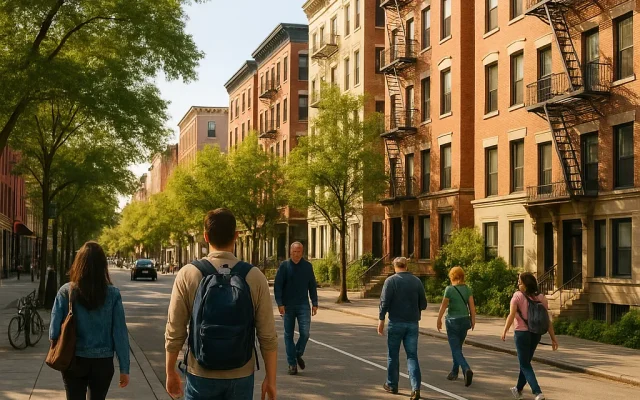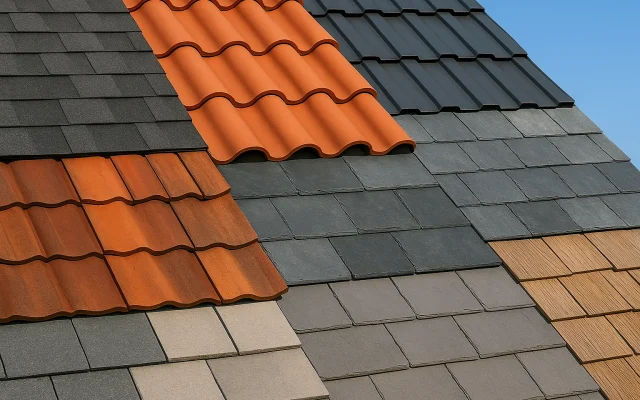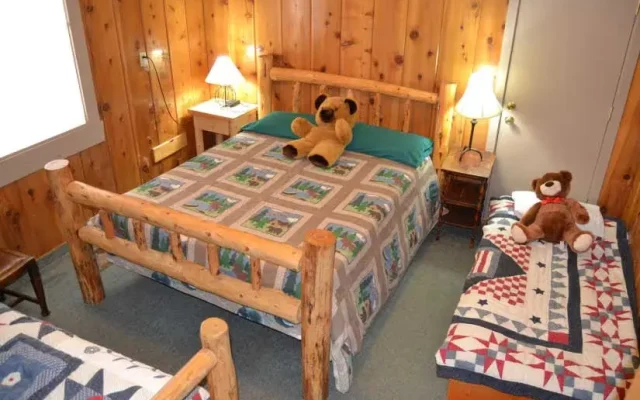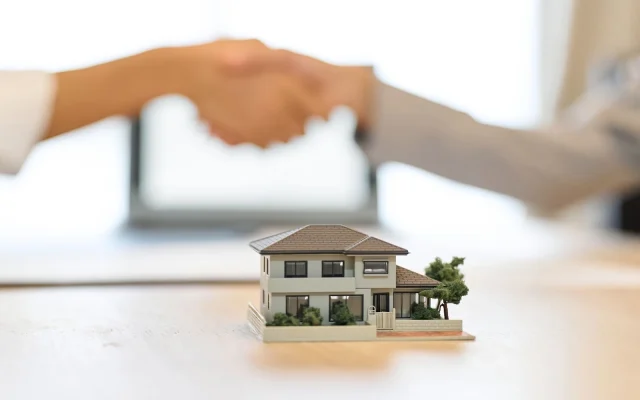Due to significant temperature fluctuations throughout the year, housing construction in Utah has its own specific characteristics. The state has challenging climatic conditions: dry air, cold winters with temperatures below 0°F in the mountains, and hot summers. Therefore, the heating system should be designed not at the end of construction, but at the architectural planning stage.
If you are planning to build or renovate a house, consult with qualified RM HVAC specialists. Proper heating installation in Utah requires consideration of the climate zone, Utah statewide building code, altitude above sea level, and energy efficiency indicators that are verified when obtaining a permit. Selecting equipment on your own often results in higher long-term costs or an improperly sized system that doesn’t heat the home evenly.
Design: Why It’s Especially Important in Utah
Utah has cold, long winters, which puts constant stress on the heating system. Energy consumption for heating is significantly higher here than in the southern states, which is why Manual J (heat load calculation) is not a formality but a guarantee that the system will be able to consistently maintain comfort at temperatures as low as -5°F in the lowlands and much lower in the highlands.
Another local factor is altitude. Salt Lake City sits at approximately 4,300 ft above sea level, and many surrounding communities are located even higher. Due to lower air density, gas furnaces operate differently than they do at sea level. The equipment must be selected with altitude derating in mind – otherwise the furnace may lose efficiency and wear out faster.
Permits and Standards: State Requirements
Before installing HVAC systems in a new home, a specific set of approvals must be obtained. For new construction in Utah, the following are mandatory:
- a building permit;
- inspection by a municipal inspector after installation;
- compliance with AFUE (for gas furnaces) and SEER2 (for heat pumps) standards.
In practice, this means that “quick installation without paperwork” is not possible. The municipality will not allow the house to be put into service. However, certified contractors generally handle all documentation on behalf of the homeowner.
What System Is Most Often Chosen in Utah’s New Homes?
Given the combination of cold winters and hot summers, the two most popular solutions are a gas furnace paired with central AC, or a dual-fuel system (heat pump + furnace). In the suburbs of Salt Lake City, Provo, and Ogden, dual-fuel configurations are becoming increasingly common because they allow homeowners to save on energy in the shoulder seasons and rely on gas only during periods of severe frost. Hydronic systems are less common due to higher installation costs but remain the most comfortable option for premium properties.
Common Mistakes Made by Developers
When heating is installed after the structural “box” is already completed, air ducts have to be routed through finished framing, which reduces airflow efficiency and often creates unwanted noise. Another typical mistake is placing the outdoor heat pump unit in exposed locations where it ends up covered in snow during winter storms. Oversizing is also a frequent issue: a system that is too powerful will heat the air too quickly, resulting in short cycling and increased energy consumption.
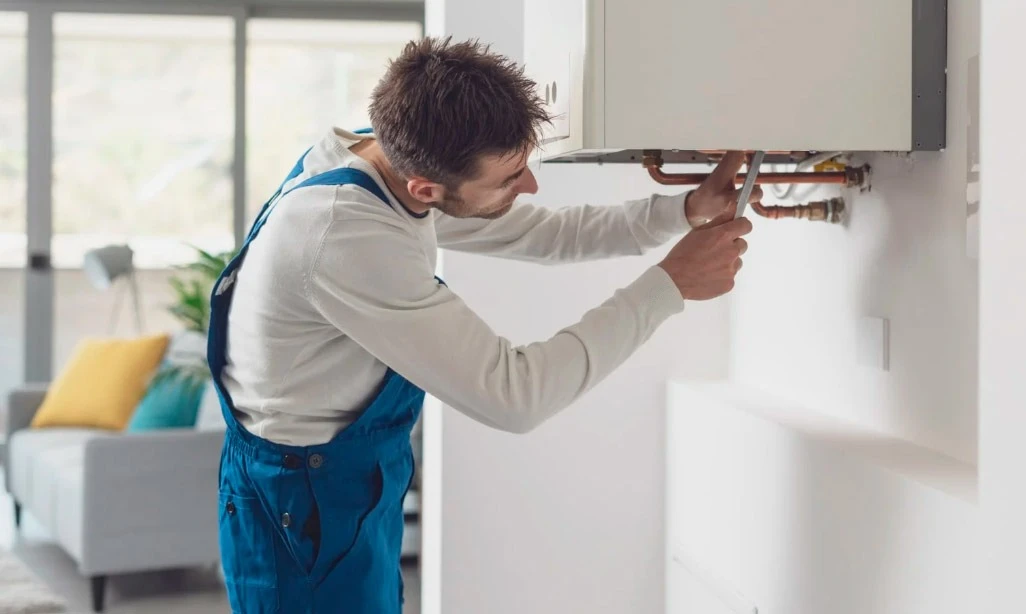
Energy Efficiency Incentives
Utah residents can take advantage of various state and utility programs that encourage energy-efficient heating system installations. Pairing these rebates with practical ways to lower your electric bill can further enhance overall energy savings. These incentives can significantly reduce upfront costs and improve ROI.
Examples of Available Incentives:
| Program | Offered By | Incentive Type | Typical Savings |
| Home Energy Efficiency Rebate | Rocky Mountain Power | Rebates for ENERGY STAR furnaces and smart thermostats | Up to $300 |
| ThermWise Program | Dominion Energy | Rebates for high-efficiency furnaces (95%+ AFUE) | $200–$400 |
| Federal Energy Tax Credit | IRS (2025) | Tax credits for qualifying high-efficiency HVAC systems | Up to 30% of cost |
Tip: Always verify eligibility and ensure your contractor provides documentation for rebate submission.
Smart Heating Controls and Zoning Systems
Smart home technologies are revolutionizing comfort and energy savings in Utah’s new homes.
Benefits of Smart Controls:
- Automatically adjust temperature based on occupancy or schedule.
- Allow remote control through smartphones or voice assistants.
- Integrate with solar or geothermal systems for optimized efficiency.
Zoning Advantages:
- Ideal for multi-story homes in cold regions.
- Each zone operates independently, reducing wasted heat.
- Minimizes temperature fluctuations between levels.
Example: A home in Park City can keep bedrooms warmer at night while maintaining lower temperatures in unused living areas.
Ventilation and Indoor Air Quality Considerations
Utah’s dry climate can cause poor indoor air quality if not properly managed.
Recommended Add-ons:
- Humidifiers: Maintain 35–45% indoor humidity for comfort.
- HEPA Filters: Capture fine dust and allergens common in desert regions.
- Energy Recovery Ventilators (ERVs): Balance indoor air exchange and humidity without heat loss.
Quick Table — Indoor Air Quality Components
| Device | Function | Ideal for |
| Whole-house humidifier | Adds moisture to dry winter air | Homes in mountain regions |
| HEPA filtration system | Removes dust and pollen | Allergy-sensitive households |
| ERV or HRV | Balances fresh air and heat retention | Energy-efficient new builds |
Maintenance Tips for New Heating Systems
Routine care keeps your system efficient and prevents costly breakdowns.
Seasonal Maintenance Checklist:
- Replace air filters every 1–3 months.
- Schedule professional inspection each fall.
- Keep outdoor units free of snow and debris.
- Inspect ductwork for leaks or blockages annually.
- Check thermostat calibration before the heating season.
Regular upkeep can extend the lifespan of your furnace by up to 30%.
Future Trends in Utah’s Heating Technology
Developers and homeowners in Utah are increasingly exploring advanced, sustainable options.
Emerging Heating Solutions:
- Geothermal heat pumps: Tap into stable underground temperatures.
- Hybrid dual-fuel systems: Combine heat pumps and gas furnaces for optimal efficiency.
- Solar-assisted HVAC: Integrate photovoltaic panels to offset winter energy costs.
- Radiant floor heating: Offers silent, even warmth — ideal for high-end properties.
What to Look for When Choosing a Contractor
There are many HVAC companies in Utah, but not all of them follow proper engineering practices. One way to protect yourself is to ask basic questions during the initial consultation:
- Will Manual J/S/D be performed?
- Is altitude derating taken into account?
- Who will obtain the permit and handle the inspection – the contractor or the homeowner?
- What Warranties are Provided on Labor and Equipment?
Contact the specialists at Rocky Mountain. They take into account the local climate, elevation, and energy-efficiency requirements when designing and installing heating systems, ensuring long-term performance. With the right approach, your new home will use less energy year after year – especially during the winter – while maintaining comfortable indoor temperatures.
Frequently Asked Questions (FAQs)
Because of Utah’s extreme temperature changes, heating must be integrated at the architectural planning stage to ensure proper sizing, efficiency, and comfort.
Cold winters, high altitudes, and dry air all influence how efficiently heating systems operate and how they should be configured.
Manual J is a professional heat load calculation that ensures the system can maintain comfort even during Utah’s subzero temperatures.
At higher elevations, air is less dense, so gas furnaces must be derated to prevent efficiency loss and premature wear.
Yes, a building permit and inspection are required, and systems must comply with AFUE and SEER2 efficiency standards.
Licensed HVAC contractors typically manage all required paperwork and coordinate inspections on behalf of homeowners or developers.
Most new homes use either a gas furnace with central AC or a dual-fuel system combining a furnace with a heat pump for year-round efficiency.
Installing heating after framing is complete, poor duct routing, oversized systems, and improper outdoor unit placement are frequent issues.
Yes, hydronic heating provides superior comfort but is typically chosen for higher-end properties due to its higher installation cost.


